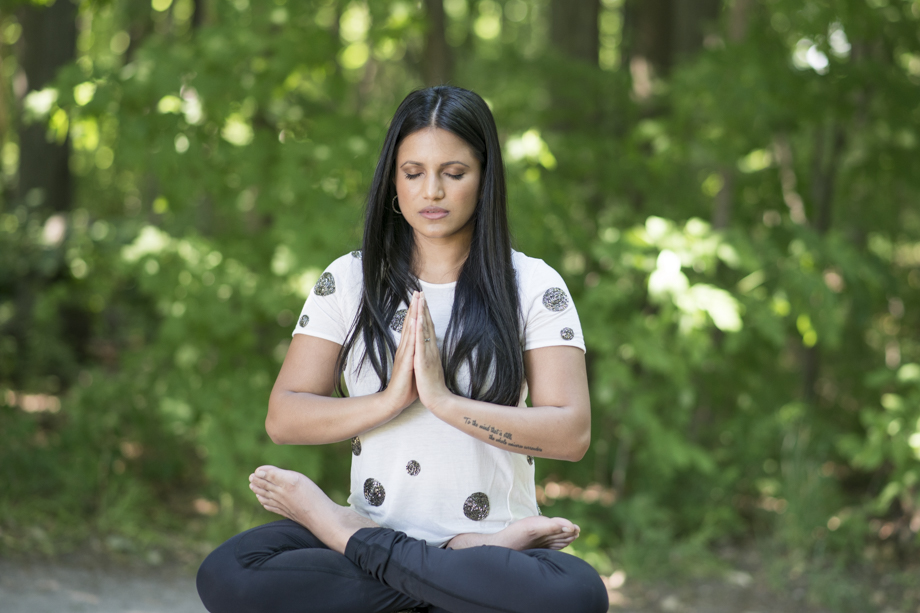Introduction: Releasing Energy From Your Body to Regulate Your Nervous System
Finding ways to regulate your nervous system can be challenging and isolating.
Many of us are stigmatized and misdiagnosed when seeking support for trauma, chronic stress, and anxiety. In truth, nervous system regulation is widely misunderstood.
During stressful times, our bodies are flooded with protective energy known as our fight-or-flight response. But when these responses are unsuccessful, our freeze response takes over and this energy frequently remains trapped inside us.
If the energy is not released, it becomes harder to manage stress, leading to anxiety, depression, insomnia, dissociation, and more.
By learning how to discharge this energy from your body, you can regulate your nervous system, overcome anxiety and trauma, and transform your pain into inner freedom.

#1 Dancing
Dancing is beneficial for releasing depression, anxiety, and anger from the body, especially for us brown and black folks.
In fact, dancing is a big part of many of our communities.
Tracing back to the 18th century in Trinidad and Tobago, enslaved persons were not allowed to take part in masquerades and balls.
So, they formed their own celebration, now known as Carnival. Carnival has a rich history and is still widely celebrated today, and has always included dance, music, and costume.
As a Trinidadian-Canadian, I think stress and trauma are released during these celebrations.
Through dance, you can change your energy within minutes.
How to Use Dance to Regulate Your Nervous System
When dancing to regulate your nervous system, music that is bouncy and springy works best.
Caribbean music like soca, reggae, dancehall, calypso, and chutney, is perfect for this. Additionally, afro-beats and reggaeton work really well.
Songs like Hello by Kes, Calm Down by Rema, Toast by Koffee, Roll Up the Tassa by Drupatee, and Dura by Daddy Yankee are popular choices from the genres mentioned.
Upbeat bouncy music improves our mood and is less likely to trigger dissociation than other genres. Trauma and stress cause us to tighten and stiffen, so we want to teach our bodies to become relaxed, springy, and bouncy again.
You don’t need to be a great dancer. Remember, this is about releasing trauma, not impressing anyone with your dance moves.
Rather than trying to move your body, let your body move you. Your body knows what movements it wants to process and complete. So, be present with the music, let go of judgment, and dance like no one is watching!
Please share some of your favorite songs or music genres in the comments that help you destress and release tension from your body.

#2 Yoga
In the West, the spiritual aspects of Yoga are often stripped away, diverting from its authentic Indian roots. However, the primary purpose of any spiritual discipline is spiritual liberation and self-realization.
In fact, many Yogic traditions have very little to do with the body. So, there is value in learning Yoga from Indian Yoga teachers, those of Indian ancestry, or anyone teaching traditional yoga.
Their teachings will likely offer more knowledge and spiritual energy, which will be of greater benefit to you.
Practices like Kundalini Yoga and Hatha Yoga restore the mind-body connection and regulate your nervous system.
Stress and anxiety cause our bodies to become tense and our minds to become frantic. So, practicing a Traditional Yoga Sun Salutation every day trains the body to relax and the mind to be calm. It will regulate your nervous system, leading to spiritual transformation.
When your mind is racing, try asanas that require balance like Vrikshasana. Bringing balance and stillness into your body will still the mind.
In embracing the tradition of Yoga, we rediscover the mind, body, and spirit connection, which is fragmented during times of trauma and stress.

#3 Nature
Spending time in nature has innumerable benefits for our overall well-being, such as:
- Increased Parasympathetic Activity – spending time with Mother Nature allows our system to go into “rest and digest”, which counters the effects of the sympathetic nervous system (fight-or-flight response)
- Regulated Cortisol Levels – being in natural settings regulates our nervous system and stress hormones
- Improved Sense of Belonging & Presence – when we spend time connecting with the earth, it becomes easier to be present and we feel a sense of belonging and connection. This boosts our mood, reduces overthinking, and calms our nervous system
- Boosts Immune System – compounds emitted by plants and trees can increase immune system functioning
- Lowered Blood Pressure – interacting with nature, gardening, hiking, and walking, improves cardiovascular health and reduces blood pressure
Listening to the sound of water soothes us, standing barefoot on the earth grounds us, and being around plants and animals helps us become more present.
So, being in nature is a great way to regulate your nervous system.
Nature is my happy place, and if you agree, here’s an article that might interest you: Tapping Into Nature’s Spiritual Presence.

#4 Conscious Breathing
As we inhale, our diaphragm contracts, and when we exhale, it relaxes. This causes pressure changes that our heart’s baroreceptors can detect.
Our baroreceptors then communicate these pressure fluctuations through our vagus nerve to our brain, which prompts our heart rates to increase or decrease.
The vagus nerve plays a significant role in managing fear and countering stress responses in our body.
It regulates our heart rate, digestion, and respiratory rate.
There are 2 key principles I want to focus on to make it easy to remember how to breathe when you’re feeling anxious or overwhelmed.
1st Principle – Doubling the Length of Your Exhales
During a panic attack, your breathing becomes quick and shallow. Your inhales become fast and deep, while there is barely any emphasis on your exhales. This causes your heart rate to speed up.
But by lengthening our exhalations, we stimulate our parasympathetic nervous system, and our heart rate starts to slow down.
1st Practice:
- Inhale through your nose for a count of 4 seconds, and exhale through your nose for a count of 8 seconds. Repeat this 8-10 times.
This practice means your diaphragm spends extra time relaxing, which regulates your nervous system.
2nd Principle – Conscious and Controlled Breath-Holding
When we practice safely and comfortably holding our breath, we can stimulate our vagus nerve through the “diving reflex” or “mammalian dive reflex”.
Conscious and controlled breath-holding leads to increased parasympathetic activity. This signals our brain to slow our heart rates down and promotes relaxation.
2nd Practice:
- Breathe deeply through your nose, filling your lungs. Hold your breath for 3-4 seconds, then exhale slowly and gently. Repeat this 3-5 times.
Holding your breath in a safe and comfortable manner counters your stress responses and regulates your nervous system.
The more you practice conscious and controlled breathing, the more you will regulate your nervous system and teach your body to relax.

#5 Self-Regulating
Learning to self-regulate is vital to our well-being. In fact, self-soothing is quite natural. But, many of us are no longer highly attuned to our natural instincts.
This is especially true when you have experienced trauma because our current world is not designed to support our healing.
We’re taught to repress our tears, to internalize our anger, or that our feelings make us weak, so we shouldn’t pay attention to them.
This type of backward thinking causes undue suffering within our bodies. Often, we don’t learn healthy ways to self-soothe when we experience emotional distress.
But through touch, rocking, and tapping we can influence our stress response to regulate our nervous system.
So, feel free to teach your kids the following ways to self-regulate.
Regulate Your Nervous System With Tapping, Rocking, and Touch
Tapping
With both hands, place your fingertips just above your eyebrows and begin tapping lightly and rhythmically for 30 seconds. Next, move your fingertips down to an inch below your collarbone and gently tap for 30 seconds. Then, tune into your body and see if you have an impulse to begin tapping anywhere else on your body, like your chest or under your arms. You can also change the length of your tapping.
Rocking
Start by either sitting or lying down. Begin slowly rocking or swaying your body in small movements either forward and backward, side to side, or in a circular motion. Allow your body to choose the movement. You can place your hands at your side, under your knees, or anywhere that feels supportive. Try rocking from your hips rather than from your chest and back. Utilize what feels the most natural to you for a few minutes.
Touch
Try placing one hand on your chest or heart center, and the other on your stomach or solar plexus. Close your eyes and take a moment to notice what you are experiencing. Follow your impulses. You may have an impulse to move your hand higher or lower, or to move it to another region of your body altogether. Once you’ve placed your hands in an area that feels right for you, hold it there for a few minutes. Simply experience the warmth and gentle touch of your own hands.
Engaging with these self-regulating impulses regulates your nervous system and helps you find your center. So, try it anytime you feel stressed or overwhelmed.

Conclusion: Regulate Your Nervous System & Restore the Mind, Body, and Spirit Connection
Following our instincts takes time, especially for those who experience anxiety, trauma, and dissociation. Eventually, you’ll start to pick up on movements and healthy impulses that your body wants to engage in to release turbulent energy.
Instead of suppressing tears, you’ll let yourself cry. And rather than internalizing your anger, you may feel relief by tapping or dancing. You may even just want to hug and hold yourself when you feel sad or depressed.
So, please be patient with yourself and remember that nervous system regulation is a process.
The 5 methods discussed are threads of well-being, and when strung together, they make us strong and healthy. So, weave them into your daily life as much as possible.
Dancing liberates the soul, Yoga offers a bridge for body, mind, and spirit, nature grounds us and helps us to become more present, conscious breathing is a gateway to relaxation, and self-regulation empowers us to be at ease with our inner world.
Through your commitment to your healing, you will transcend the bonds of anxiety, stress, and trauma. Your mind, body, and spirit connection will be restored as this unprocessed energy is released. Because each time you direct your desire and will toward healing, it is a testament to your strength and resilience.
So, trust in your own transformation because within you lies the power to heal and thrive.
Wishing you peace, healing, and tranquility.
With Love,
Ravelle
If you found value in this post, Join My Email List to be notified about new articles and get updates about meditation, spiritual awakening, mental health, and mindfulness.
Related Articles
Understanding and Healing the Impacts of Trauma
Find Your Center In Difficult Times
Tapping Into Nature’s Spiritual Presence


Florence and the Machine’s “Shake It Out” is a favorite for releasing tension. I’m excited to add rocking to my self-regulating strategies!
Thank you for sharing a song that helps you release tension. While “Shake It Out” by Florence and the Machine might have a different vibe than the bouncy/springy music mentioned, it’s great to see how different songs and genres can offer relief to different individuals. So, it’s important for us to follow our own impulses and instincts! Also, happy rocking! 😊
Glad I found this article, the exercises really work well! Thank you
So happy to hear the exercises work for you, Galena. May you be happy and well 😊
Yes!! I love all of these practices and find they are so helpful in regulating my nervous system. Thank you for bringing awareness to the importance of these practices! It’s so easy to disengage from the discomfort causing more stress and harm in our body. These practices can really make a huge impact!
Absolutely! I’m thrilled to hear that these practices have been beneficial for you in regulating your nervous system. Its so true, it’s often tempting to disconnect from discomfort, inadvertently adding to our stress. It’s so encouraging that these practices have such a positive impact. Wishing you the best, always. 🙏❤️
Such a great informative post. I practice a lot of dancing and yoga, but not enough conscious breathing. I will try this for sure! Thank you for this.
I’m so happy you found this post informative. It’s awesome that dancing and yoga are part of your practice. Conscious breathing will be a great addition to your routine. Wishing you all the best! 😊 🙏❤️